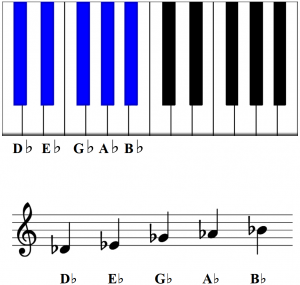Are you having trouble reading piano sheet music? Or are you a beginner piano player wanting to learn how to read the notes? Reading sheet music is easier than you think.
The naming of notes follows the order of the alphabet from A to G and then repeats itself:
A, B, C, D, E, F, G, A, B, C, D, E, F, G, A, B, C
The music is notated on five horizontal lines called the staff. For the piano there are two different clefs (clef meaning ‘key’ in French): the treble clef and the bass clef. They indicate the pitch of the notes that are written. The treble clef is a stylized ‘G’ which sits upon and circles around the second line from the bottom. It is also called the G-clef. The imaginary note it surrounds is a G. The notes written in the treble clef are usually played with the right hand.
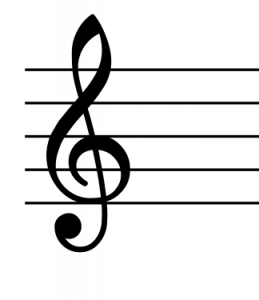
Notes that are situated above or below the staff are notated with ledger lines. For example, middle C – the reference point for musical notation on the piano is sitting on the first ledger line below the staff in the treble clef.
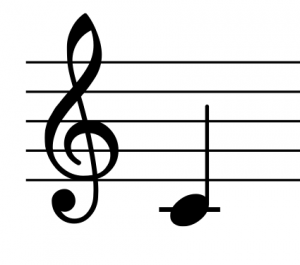

The White Keys
The notes which are written on the lines above middle C are E – G – B – D – F starting at the bottom. You can use the mnemonic Every Good Band Draws Fans to remember them.

On the piano you have these white keys for those notes:
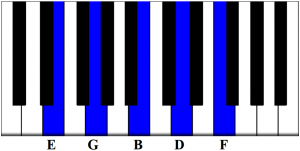
The notes which are written between the lines are F – A – C – E as in face, starting at the bottom.

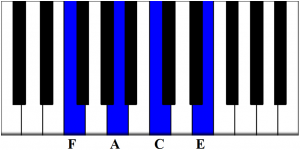
If you combine the notes written on the lines and between the lines, you get eight notes or an octave moving from E to E, covering all white keys.
The Black Keys
The black keys on the piano denote sharps and flats. A sharp simply means that you move up a half step from any given note. If you have a C for example, C sharp would be the black key to its right. Moving up a half step from G will give you G sharp. The symbol for sharps is ♯. C sharp is written as C♯.
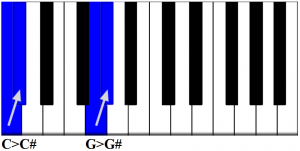
When written out as notes, a sharp is marked by the ♯ symbol which precedes the sharpened note.
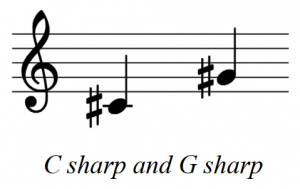
The five black keys are therefore C♯, D♯, F♯, G♯ and A♯. For E and B there are no sharps on black keys, because if you move up a half step from E you get F (another white key), and if you move up a half step from B you get C (another white key). However, if you play a very complex piece and see an E♯ or B♯ , know that it is the same as F or C.
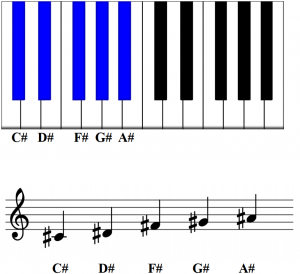
Just as a sharp means that you move up a half step from a given note, a flat tells you to move down a half step. If you have D for example, D flat would be the black key a half step below it. Moving down a half step from A will give you A flat. The symbol for flats is ♭. D flat is written D♭. D♭ and A♭ are actually the same notes and the same keys on the piano as C♯ and A♯ . They are only called different names, depending on the musical context, i.e. the key you are playing in.
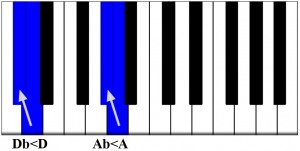
When written out as notes, a flat is marked by the ♭ symbol which precedes the flatted note.
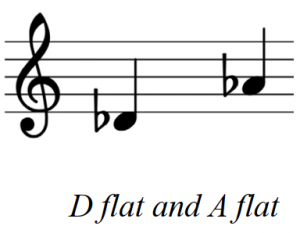
The five black keys are therefore D♭, E♭, G♭, A♭ and B♭. For F and C there are no flats on black keys, because if you move down a half step from F you get E, and if you move down a half step from C you get B. However, if you play a very complex piece and see an F♭ or C♭, know that it is the same note as E or B.
